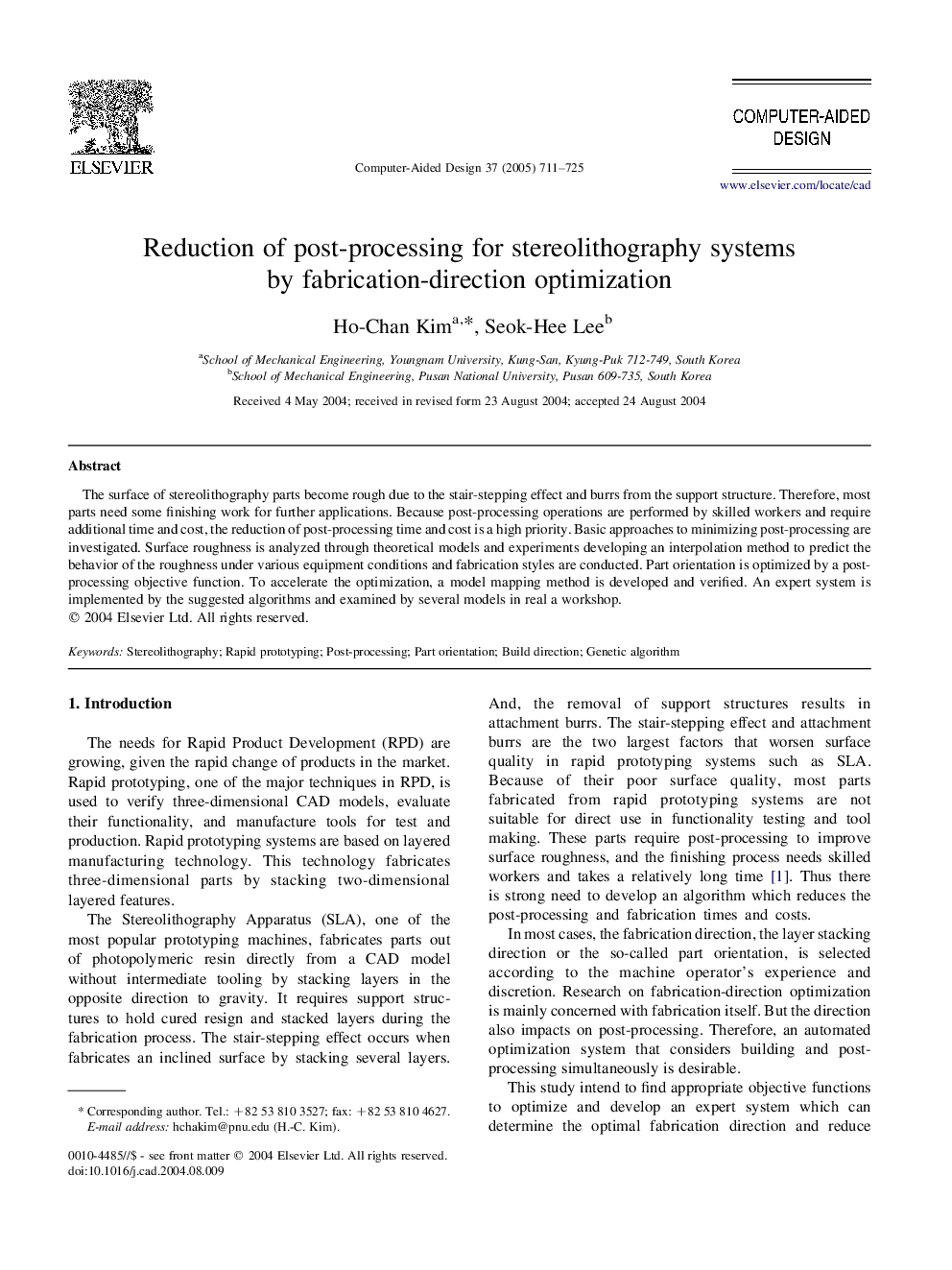| Article ID | Journal | Published Year | Pages | File Type |
|---|---|---|---|---|
| 10335302 | Computer-Aided Design | 2005 | 15 Pages |
Abstract
The surface of stereolithography parts become rough due to the stair-stepping effect and burrs from the support structure. Therefore, most parts need some finishing work for further applications. Because post-processing operations are performed by skilled workers and require additional time and cost, the reduction of post-processing time and cost is a high priority. Basic approaches to minimizing post-processing are investigated. Surface roughness is analyzed through theoretical models and experiments developing an interpolation method to predict the behavior of the roughness under various equipment conditions and fabrication styles are conducted. Part orientation is optimized by a post-processing objective function. To accelerate the optimization, a model mapping method is developed and verified. An expert system is implemented by the suggested algorithms and examined by several models in real a workshop.
Keywords
Related Topics
Physical Sciences and Engineering
Computer Science
Computer Graphics and Computer-Aided Design
Authors
Ho-Chan Kim, Seok-Hee Lee,
